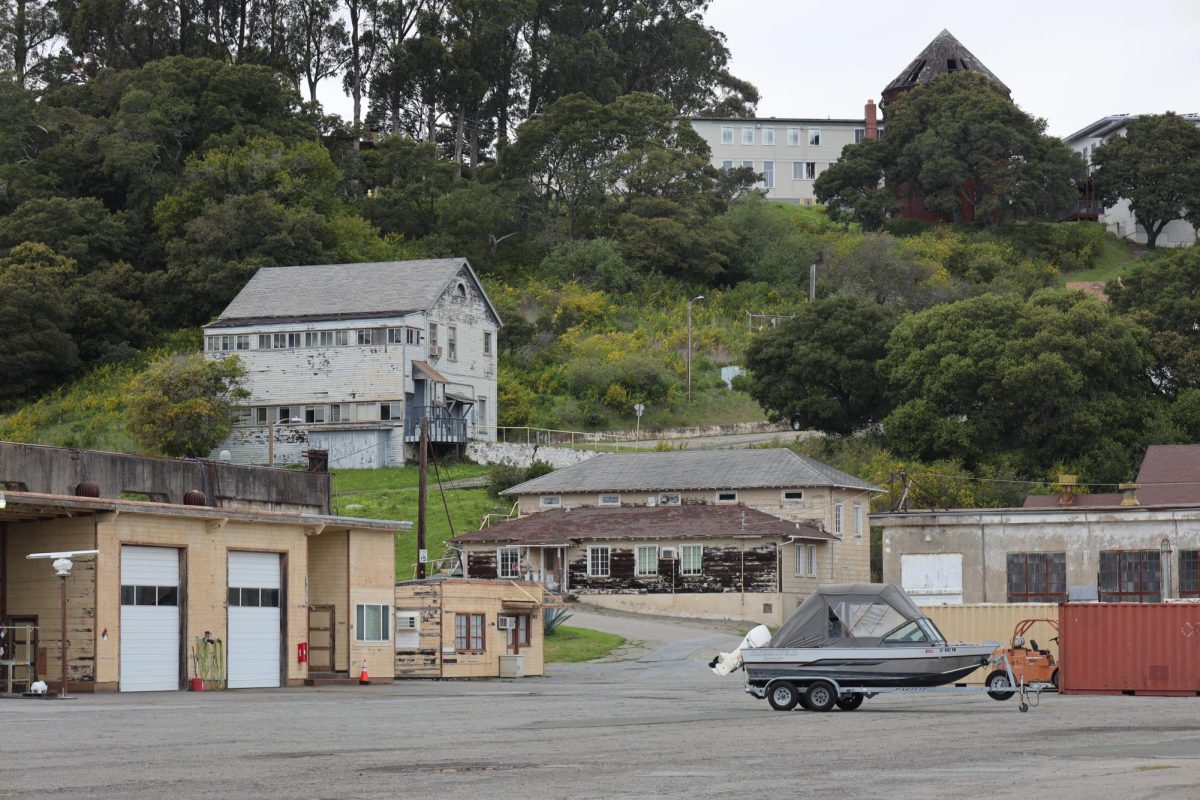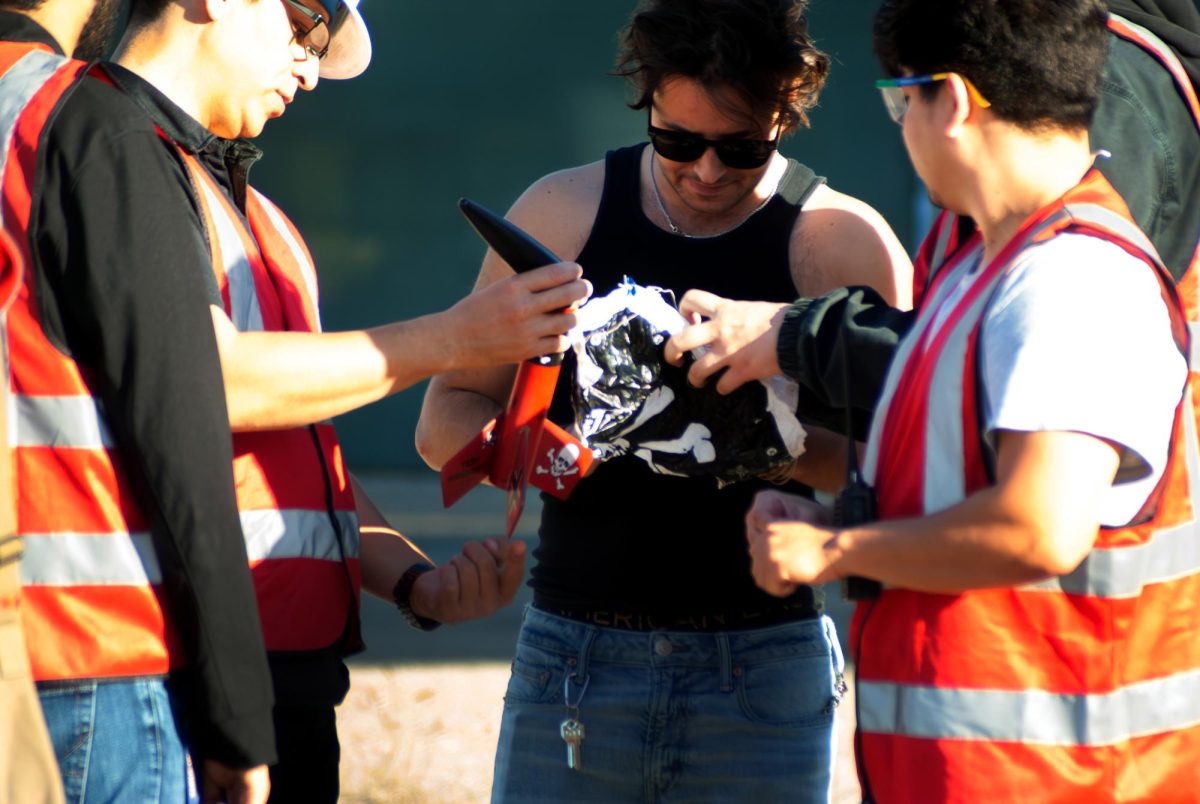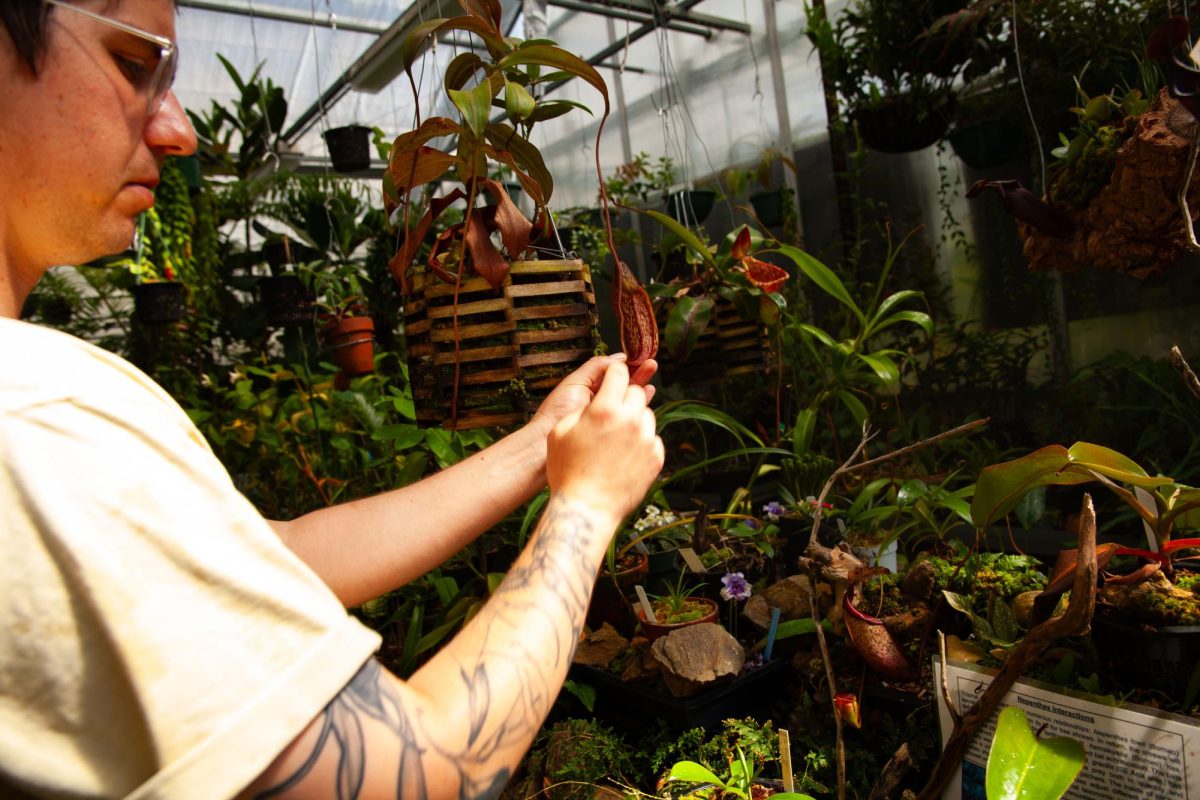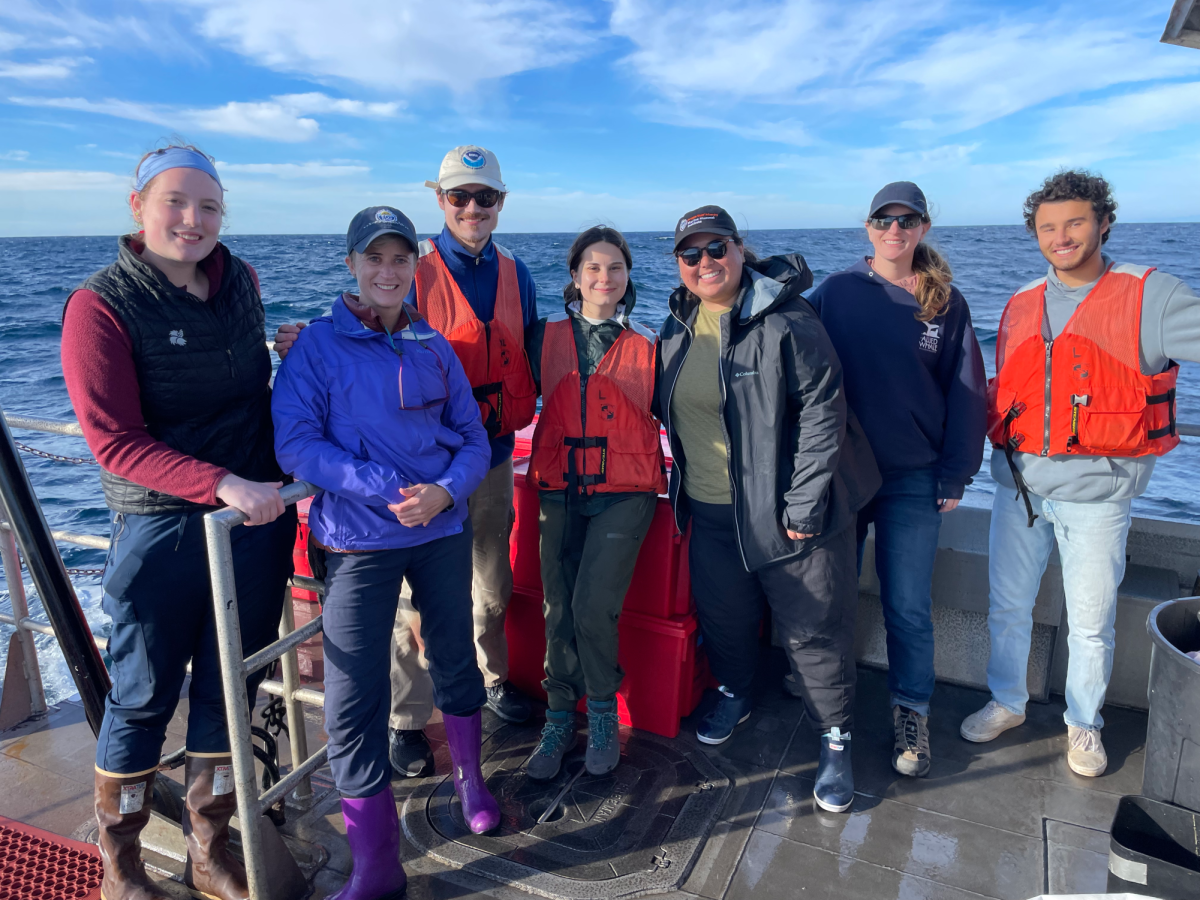Words: Jennifer Sandoval
East of San Francisco past Pleasanton lies the small city of Livermore. The city is normally quiet and quaint, but at two in the morning it holds an urban legend. Just behind the Safeway supermarket, a pair of railroad tracks stretch onward, inviting those who enjoy ghostly encounters to drive along the desolate and dark street beside it. The lights that kept the daring safe from their own fears slowly becomes less frequent until there is nothing left but a row of warehouses, a cement wall splattered with graffiti that divides the street and railroad tracks, and a dim florescent bulb coming from one of the warehouses. This is the destination for those who want to meet Rock Boy.
Although there are many versions of this tale, one story says that long ago a young boy often walked along the railroad tracks as a shortcut to get home. One day, the boy got caught in the tracks and threw rocks at the cement wall as a plea for help. No one was there to hear the clack of the rocks hitting the cement wall.
Clack. Clack.
It is said that if anyone dares to roll down their windows and turn off their car and call Rock Boy three times, he will try once again to get the attention of those who are looking for him.
Clack!
Communication with ghostly entities has always been a popular activity among the thrill-seekers and those who are interested in the paranormal. In a world that has more questions than answers, it is only natural to want to believe in something, no matter how unexplainable it may be. But in the 21st century, where people are quick to attempt to explain anything through the use of science, not even the paranormal can escape the clutches of technology.
Paranormal investigators have used many techniques to try and communicate with ghosts, but they most often fall into a spiritual or technological category. Technologically, hunters concentrate on finding evident proof that ghosts exist by spending hundreds of dollars with gadgets and gizmos that claim to detect paranormal activity through scientific methods, like wavelengths. This proof can be obtained through video, recordings, and devices that record wavelength measurements. The other form can hardly obtain any physical or scientific proof, but instead focuses on spiritual findings. People claim to be able to connect with the spirits of the dead, and also find links with a parallel universe that can connect with “evil” beings such as demons. These spiritual connections are discovered through the use of Ouija boards, seances, and trances.
But with the recent boom in the popularity of the paranormal investigations, people are finding cheaper and more convenient ways to dabble in ghost hunting, and it can be as cheap as $.99 or even free at the App Store.
The iPhone made its way into the list of gadgets used for scientific search of paranormal activity, although it is still uncertain how efficient and reliable these apps may be. Spud Pickles’ Ghost Radar has become extremely popular, and is rated four out of five stars by more than seven hundred iPhone users. The app claims to detect paranormal activity that is near, although there is a disclaimer toward the end of the description that notes the app should be used for entertainment purposes only. Ghost-O-Meter, created by Adrian3, also claims to detect ghosts that are near, but has no such disclaimers in its description. How is it possible to tell the difference between apps that are just for fun to those that are the real deal?
Nichole Boscia, 34, is the lead investigator of GhostGirls, a group of female paranormal investigators based in Bay Area founded in 2009. Boscia grew up in rural Pennsylvania, where she had her first ghostly encounter.
Boscia was unable to accompany her parents to go shopping that night. There was a school report which needed to be finished and a stack of laundered clothes downstairs. Her parents weren’t afraid to leave the thirteen year old at home; the closest people around were her neighbors a few miles away. She walked down the steps to her basement to fold her clothes when she heard the front door open and close abruptly. Must be the wind, she thought. Until it happened once more.
“I knew if someone was there, they wouldn’t have just entered my house, so I again wrote it off as my imagination,” Boscia recollected.
It was only when the quiet thump of footsteps creaked the floorboards above her that she began have a chilling fear that something may not be right. After a moment of silence, the faint tapping of her typewriter disturbed the stagnant silence.
“The typewriter started to type in actual deliberate typing-tap tap, return key, tap tap. It’s exactly as if a human was typing sentences on it.” Although Boscia deals with paranormal activity when she goes on investigations now, she was not prepared to handle what she had witnessed at the young age of thirteen.
“I wanted to look up the staircase to see what was there, but this feeling of absolute dread came over me and I knew it was something I wasn’t allowed to see,” Boscia explains, “I knew I wasn’t just hearing things in my head, and I wasn’t the type of child to have an over-active imagination.”
As Boscia grew older, so did her strength and curiosity. Her first investigation was on board the USS Hornet in Alameda, California, where she obtained some chilling EVP, or electronic voice phenomenon. EVP is said to capture disembodied voices from spirits or other paranormal beings. But Boscia wanted to prove something else with the evidence she obtains. She doesn’t want to just reveal that there may be something paranormal amongst us, but she also wants to find how the paranormal may correlate to science.
“My goal is to be able to find answers as to why something without mass is capable of leaving footsteps, or what mechanism is used to move objects while adhering to energy conservation,” speculates Boscia. “Everything is composed of fermions and bosons, mass and energy are the same thing just written in different units, so somehow we must be able to figure out what these spirits are made of.”
Boscia is referring to String theory. Physicist Brian Greene simplifies the concept in a lecture he posted on TED.com, a non-profit organization that brings people together to share “ideas worth spreading.” Theodor Kaluza, a German mathematician, proposed in 1919 that there may be more than the three dimensions that humans are aware of.
“That is in addition to left, right, back, forth, up and down Kaluza proposed that there might be additional dimensions of space that, for some reason, we don’t yet see,” explains Greene.
Kaluza based his theory off of an earlier theory of gravity created by Albert Einstein. Einstein said that the universe is flat until matter, like the Sun, warps the fabric of the spacial environment.
“The moon is kept in orbit because it rolls along the valley in the curved environment, that the Sun and the Moon and the Earth can all create by virtue of their presence,” said Greene. The Earth revolves around the sun in the same orbit due to the same, larger valley the Sun makes.
“[Kaluza] imagines that the world had four dimensions of space, not three, and imagines that electromagnetism was warps and curves in that fourth dimension.”
Inside the depths of every atom dances a string of energy, and these different vibrating strings of energy make up a variety of particles which make up the universe and all it holds.
“When you study the mathematics of string theory, you find it doesn’t work in a universe that just has three dimensions of space,” says Greene. Nor does it work in a universe with six or eight dimensions. How many dimensions does it take for string theory to work? Ten dimensions of space and one dimension of time.
“It leads us right back to this idea of Kaluza and Klein that our world, when appropriately described, has more dimensions than the ones that we see,” speculates Greene. “But it raises the question: are we just trying to hide away these extra dimensions, or do they tell us something about the world?”
Although Greene does not apply string theory to anything paranormal, Boscia believes they may have a more intimate relationship.
Boscia doesn’t feel the iPhone has the equipment to render any information on ghosts, string theory or otherwise. She is not a supporter of the iPhone apps that appear to serve as ghost hunting tools. In fact, her team prefers the cellphones switched off when an investigation takes place.
“The [electromagnetic field] meters we buy are several hundred dollars — a $0.99 app isn’t going to be able to compare,” says Boscia. “They are for entertainment purposes only and I have yet to find one that has any credibility. I’m a software programmer so I’m quite wary of most of those paranormal apps since I can see what they’ve done for their product. Yes, it has basic functionality to detect AC fields and anything beyond that is hokey.”
Other ghost hunters believe the iPhone apps may be more useful. On a bright Sunday morning, Jackie Ganiy’s voice reverberates around the room as she speaks into the phone. Her voice is clear and confident as she explains how she investigates the paranormal. She should know; she’s been hunting ghosts for more than thirty years.
Ganiy, 52, has been dabbling in the paranormal since her teens. At sixteen, she discovered In Search Of, a television series that came out in the late ‘70s. The investigators conducted paranormal experiments in a very unconventional way. “[The investigators] would record thirty minutes at a grave site and played what they got. They wouldn’t try to have conversations or anything,” recollects Ganiy. “It blew my mind.”
Ganiy specializes in EVP, and captures disembodied voices through recorders, spirit boxes, and, yes, even iPhone apps. Ganiy has even reduced the equipment she takes with her when she investigates the paranormal.
“I take my phone with me, with all the apps. And a spirit box, I love the spirit box…and that’s about it.” Spirit boxes are devices that claim to communicate with ghosts through the use of radio frequencies. According to Ganiy, the apps for the iPhone seem as legitimate as any high-priced equipment sold for paranormal investigations, although not all iPhone apps for ghost hunting work. Some apps may be used in paranormal hunts that may not have been created for investigative purposes. The voice memo app, which can record audio, can potentially be used to pick up EVP. The camera app, too, has the ability to pick up paranormal sightings with a touch of a button.
“The radar [blips] are just eye candy,” she comments. “They don’t work.”
Ganiy claims that she picked up the same EVP recording through her different communication devices. On an investigation, her spirit box picked up a disembodied voice whispered her name, Jackie. The same whisper could be heard through her voice recorder and her iPhone app.
After this huge wave of paranormal hunters emerged a decade ago because of shows like Ghost Hunters and Ghost Adventures, Ganiy decided she, too, would created her own society right here in the bay area: Sonoma Paranormal Independent Research Investigative Team, or S.P.I.R.I.T.
Ganiy, isn’t completely convinced of the methods in which ghost hunters use to show proof of their findings now compared to what they showed back in 1976. Ganiy says that the media now makes paranormal phenomenon seem much more common than it really is.
“The longer I’ve done it, the more skeptical I get,” she explains.
Christopher Weinberger, an assistant professor at San Francisco State, teaches a Japanese fiction class that also incorporates ghost stories. He is also skeptical about the investigations posed for television.
“Technology tends to be extraordinarily ‘normative.’ It conditions not just what we see, but the very criteria through which we understand what seeing and believing might mean,” Weinberger explains. “We can atomize the world into spectrums [sic] of light and neural firings, but that can have the effect of delimiting rather than broadening our understanding of human experience…I find the recent spate of ghost-hunting shows painfully staged and formulaic.”
Regardless of its entertainment value, ghost detecting apps, as well as other means of finding paranormal entities through technology will continue to be a part of ghost hunting. But what purpose do these technological evidences serve to the ghost hunting community? Maybe it’s to show the world that ghosts do exist outside of Photoshop and fuzzy lights on pictures? Or possibly a way to understand and explain the unexplainable? But convincing scientists to pursue a spiritual connection with science may be a harder task than imagined, says Boscia.
“Our scientific theories need to be adjusted to compensate for these events. Science considers the subject taboo instead of embracing it to see if it can enhance our understanding of time and reality.”




![Hashem Mishal using an angle grinder to cut a drill bit, in the SAE team’s garage at SF State on Tuesday, Nov. 12, 2024. “We don't get anything from the school other than this workshop,” Mishal said. “Our advisor, he runs the shop, and he also works with us to try and get as [many] opportunities as possible. So it was really nice, in helping us get this space, but all the tools are just some of the guys’ or third parties’. I don't know where these tools came from, but a lot of it was sponsors, donations from alumni. Right now, all the hardware we’ve been paying out of pocket for the time being.” (Jonah Chambliss / Xpress Magazine)](https://xpressmagazine.org/wp-content/uploads/2024/12/Chambliss_F1_001_LEDEPHOTO-1200x800.jpg)



Kyong Cioffi • Apr 6, 2013 at 2:53 pm
Thanks for sharing what was in your head. I read every word of it. Now I need to get it out of my head. Seriously, a fun hub read, as well as most of the above comments.